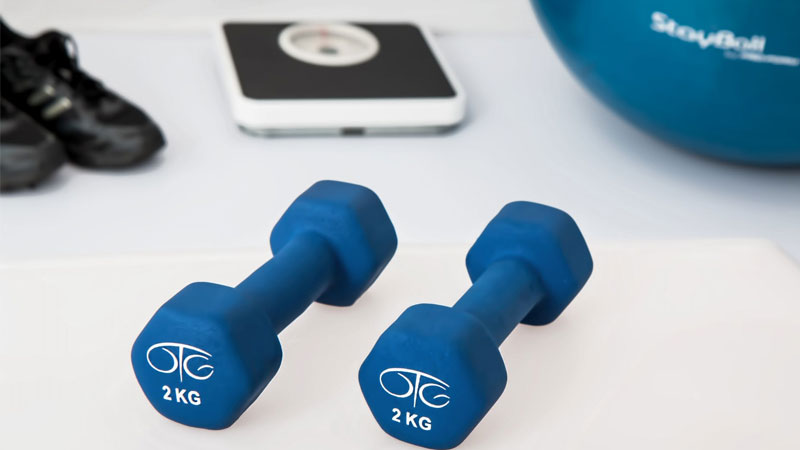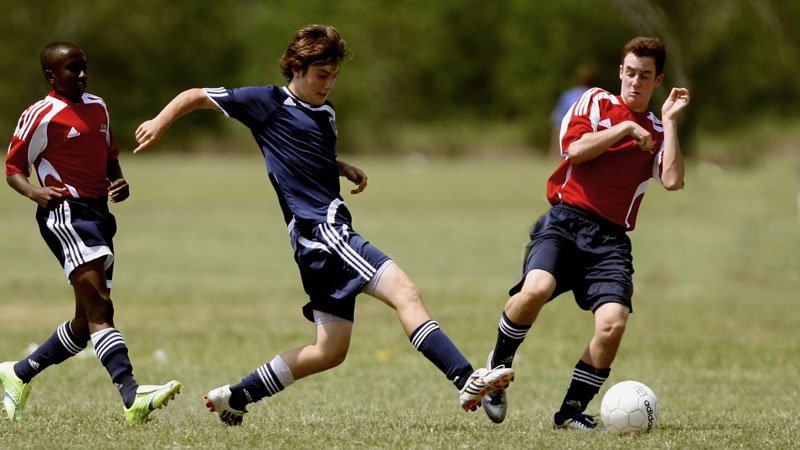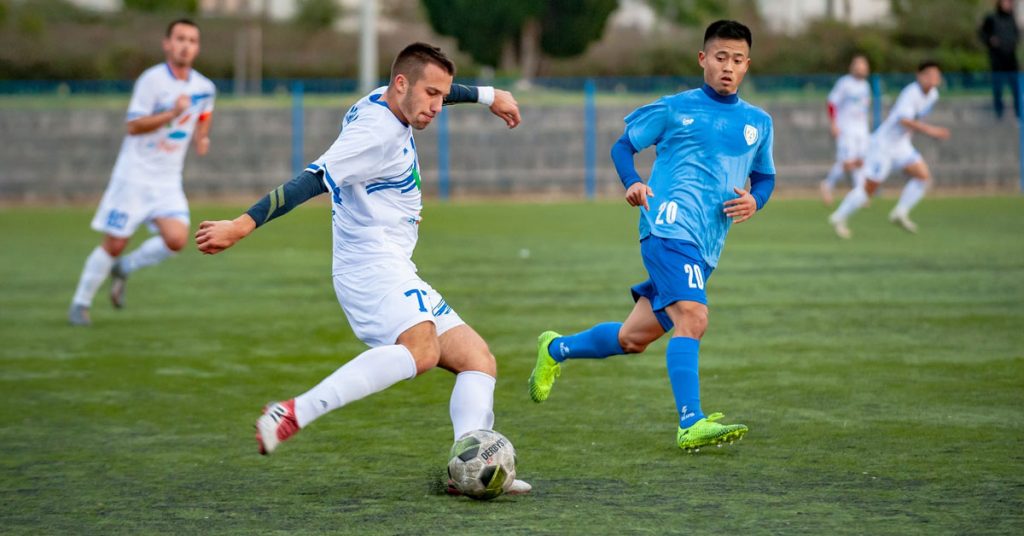Authority Soccer (authoritysoccer.com) is a participant in the Amazon Services LLC Associates Program, an affiliate advertising program designed to provide a means for sites to earn advertising fees by advertising and linking to Amazon.com. This site also participates in other affiliate programs and is compensated for referring traffic and business to them.
Many people take the opportunity of a new year to commit to new habits. Almost all of us at least once in our lives made the new year new me cliche promise.
So we must look after our sleeping time, eating habits, and exercise: aerobic and or anaerobic. We decide to exercise playing soccer, and the question arises, is soccer an aerobic or anaerobic sport?
Although the game is predominantly aerobic, the players’ performance will depend on how they respond to the game’s anaerobic demands.
A good soccer player must have an excellent aerobic condition and a tremendous anaerobic capacity.
Some sports are clearly on one side of the aerobic or anaerobic spectrum, but that is not the case with soccer. The game is made of short and intense anaerobic demands, with relatively long intervals and aerobic activities.
As the game is highly dynamic, every player on the field must be ready for aerobic and anaerobic efforts at any time.
What is aerobic exercise?

Aerobic exercise helps cardiovascular conditioning. The definition of “aerobic” is “with oxygen.” This means that breathing controls how much oxygen is sent to the muscles to enhance their movement and fuel burning.
It also decreases the risk of heart diseases, lowers blood pressure, assists in weight management and weight loss, improves lung function, and controls blood sugar.
What is anaerobic exercise?

In opposition, anaerobic means “without oxygen.” This means that the exercises’ intensity is so high that the cardiovascular system can’t deliver oxygen to the muscles fast enough.
As muscles need oxygen to work correctly, anaerobic exercises should always be brief.
Anaerobic exercises help increase endurance and make the muscles stronger. It strengthens the bones, assists in weight loss, and improves good mood; it has been proven that anaerobic exercises decrease anger, tension, and depression.
What type of exercise is soccer? Aerobic or Anaerobic?
As we mentioned above, playing soccer demands both aerobic and anaerobic efforts. And a good footballer can’t prescind of any of them.
Soccer players perform activities at several levels of intensity and speed.
They walk, jog, sprint, jump, struggle for the ball, and more. When we think of the kind of conditioning needed to practice the sport, the key element to observe is that any of these actions lasts long, the intervals between them, and their aerobic exigence.
If we break down the game into moments, we will see that the game has short segments of high intensity, long intervals, and a more constant and present aerobic exigence.
The player jogs their way around the field, and they occasionally walk. The game actions rarely occur over the same spot of the pitch and involve the same player.
Some players can spend minutes without touching the ball. These are the intervals and aerobic moments of the game.
The sprints, the jumps, the shooting, and the race to the ball are the anaerobic moments.
That is the reason why a soccer player must be prepared for both moments of the game.
They must follow the game and have an advantageous position in the field to receive the ball or defend, but if they have poor sprinting or shooting skills, there is no point in being in the right place at the right moment.
Top-notch cardiovascular conditioning’s main idea is to perform consistently from minute 1 to 90 in a soccer game.
Aerobic training is often associated with long-duration exercises at a low intensity, but the truth is that there are lots of pretty intense aerobic workouts.
It uses your large muscle groups, it is rhythmic and can be maintained continuously for at least ten minutes. Aerobic training also strengthens your heart lungs and your cardiovascular system to manage and deliver oxygen fast and efficiently throughout your body.
But aerobic training not only strengthens the heart and cardiovascular activity; participating in several aerobic exercises has many health benefits.
It improves your circulation, helps your body use oxygen better, increases energy, and increases your endurance. This means you can work out longer and not get tired.
There are other secondary benefits of practicing aerobic exercises that transcend the soccer preparation but are worth mentioning:
- Reduce the risk of developing heart diseases.
- Reduce the risk of developing diabetes.
- Help reduce body fat.
- Helps to reach and keep a healthy weight.
- Help reduce stress, tension, anxiety, and depression.
- It improves sleep.
On the other hand, Anaerobic training is brief, intense bursts of physical activity, such as weightlifting and sprints, when oxygen demand surpasses oxygen supply.
While aerobic exercises rely on oxygen, anaerobic exercises depend on energy stored in the muscles, in a process called glycolysis.
Glycolysis is a method in which glycogen is broken down into glucose, also known as “sugar,” and is converted into energy. This process inside the muscles occurs during anaerobic training without the use of oxygen to produce energy quickly.
This fast production of energy generates lactic acid, which is a by-product of glycolysis. It forms when your body breaks down glucose for energy when oxygen is low. It is responsible for making your muscles feel tired.
Practicing anaerobic training often will help your body tolerate and eliminate lactic acid more efficiently. Besides helping to tolerate and eliminate lactic acid, anaerobic exercise has other benefits.
- Builds and maintains lean muscle mass
- Protects your joints – The increase in muscle mass increases strength, including the muscles around the joints. This helps prevent injuries.
- Boosts metabolism – It helps build and maintain lean muscle. Lean muscle mass is metabolically active—the more lean muscle you have, the more calories your burn.
- Increases bone strength and density – Anaerobic training will increase the strength and density of your bones more than any other exercise.
- Improves your energy – Your body depends on glycogen stored in your muscles as energy. Regular anaerobic exercise augments your body’s capacity to store glycogen. This gives you more energy during intense physical activity.
- Increases sports performance – Regular anaerobic training increases speed, strength, and power. Which ultimately helps improve your in-game performance.
How to enhance your aerobic soccer attributes

Aerobic conditioning is one of the most critical factors for a successful player or team, but too often not appropriately trained for the modern game.
One of the best choices to increase aerobic resistance is to perform specific circuit training to improve your overall capacity.
This primary circuit requires some essential equipment:
- Hurdles.
- Poles.
- Agility ladder.
- Cones.
- Two small goals.
- A soccer ball.
The circuit starts with coordination using the hurdles followed by a 10 to 15 yards recovery zone. After going through the hurdles at maximum speed, walk through the recovery zone.
Then grab the ball and dribble it through the poles the fastest you can. The poles should be placed three yards apart in a zigzag pattern.
Once you passed the last pole, shot at one of the goals. Walk through the next recovery zone, this time juggling the ball to the next station.
Use the agility ladder in the next step for coordination and agility. Go through the agility ladder and then sprint for 10 to 15 yards. After that, walk through the next recovery zone.
The final station is an agility and dribbling station. Put 6 to 8 cones placed in a straight line. Dribble past the cone lines and after you pass through the last cone, shoot the ball at the goal.
After the drill, walk through the fourth and last recovery zone of 10 to 15 yards.
The workload of this training session is to complete 4 full sets. To complete 1 set, you must do 4 laps to the circuit. Take two minutes to break in-between sets.
When going through this training routine, you need to keep in mind working at 100% of intensity during the stations and respect the recovery zones. While intensity is vital, don’t sacrifice technique for speed. Make sure all the exercises are correctly performed.
Advanced workouts can make some slight changes to each drill, making them a little bit harder.
For instance, you can go through the hurdles in a single-leg mode. Leave one leg on the outside of the hurdles, and raise only the other one while advancing in the line.
In the next phase, the poles, dribble through them, controlling the ball with one leg, and don’t touch the ball with the other one.
In the agility ladder, do the 2 in 2 out movement. To perform it, as its name indicates, get both feet inside the ladder and then both feet to its sides before advancing to the next step.
You can also do sidesteps or single steps in the hurdles. Using both feet while dribbling through the poles and the cones. Creativity is a good counselor when training and increasing the difficulty of an exercise.
How to enhance your anaerobic soccer attributes

As aerobic training provides the fuel to consistently perform during the game’s 90 minutes, anaerobic exercises prepare the body to explode with high-intensity responses to different game situations.
Some exercises will help us develop our lower back, legs, and core muscles used in a soccer game.
This soccer-specific drill with eight different exercises will improve your speed, power, agility, and coordination. To set up the drill, you need to put six to eight cones in a single line. Next to the cone line, place a soccer ball.
Five yards behind the cones, put three cones in a straight line, perpendicular to the set of cones you already have. These three isolated cones must be separated by 3 yards from each other.
Finally, place one single cone ten yards away from the cone line.
The drill consists of first performing unique coordination, agility, or power movement through the cones, followed by an intense 10 yards sprint towards the single cone. Then turn and slowly jog back to the ball placed next to the cone line.
As you approach the ball, quickly accelerate and speed dribble the ball between two of the three cones placed on the opposite side of the cone line. Then go into the 1 minute recovery period. It is critical to take appropriate rest in between sets.
While performing the routine, there is a couple of details you should keep in mind.
- Keep your feet around shoulder-width apart when performing the drills.
- Always stay on the balls of your feet.
- Focus on pumping arms when moving.
- Perform each exercise at 100% intensity.
- Take appropriate recovery time in between sets.
- For better results, perform this exercise routine 2 to 3 times per week.
You can change how you perform this drill to add difficulty as you get more comfortable with the movements and start to get too easy.
You will change the technique to sort out the cones, the second and third part of the drill remains the same.
- One step – Advance through the cone line with a single step. Each step makes you advance a line of the cones.
- Sidestep – Advance through the cone line, walking sideways. Remember to raise your knees in each step and pump your arms.
- 2 in 2 out – The objective is to put both feet between the cones and then outside before advancing to the next line.
- Shuffle – In this movement, you attack the cones diagonally. And when one foot is inside of the cone line, the other one is outside of it.
- Forward and Back – In this drill, you also start sideways. But instead of advancing to the side, walk backward and forward, going over the cones’ line from in to out.
- Pogo Jump – Jump using both legs and advance forward over the cones without flexing your legs. Try and keep them stretched as you jump.
- Side pogo jumps – The same as the previous variation, but jumping sideways.
- Knee to the chest – In this variation, jump forward over the cones but flex your legs. Try and get your knees to the chest in each jump.
What many soccer coaches choose to improve their players’ strength is what is called bodyweight exercises. These exercises are not ideal if you are looking to increase your muscle size but develop your existing muscles the correct way.
Bodyweight exercises add strength and definition to the muscles you already have. The advantage of this type of routine is that it can be done anywhere, you don’t need any kind of equipment.
It is recommended to perform each exercise in three sets of ten repetitions each. Here is the list of some of them:
- Squats
- Lunges
- Static leg extensions
- Calf raises
- Hip thrusts
- Triceps dips
- Pushups
- V ups
- Russian twists
- Plank. Hold it for one minute, three sets
How hard should conditioning drills be?

Contrary to what many coaches think, most conditioning doesn’t push soccer players to their limits enough. Many of the conditioning drills don’t even prepare the players to consistently perform for 90 minutes.
Many fitness coaches think that a few laps around the pitch are enough to increase their players’ cardio; they are wrong. Jogging around the field is not enough. Players need anaerobic conditioning, this is, anaerobic scope and expertise to keep top speeds.
It is necessary to understand that most aerobic work is already done during team practices.
This is important when the coach has little time with their players and optimizes the minutes of training. Warm-ups, technical drills are also part of the aerobic workout, for instance.
A solution to this could be replacing some aerobic training with high-intensity training. Light aerobic activity like jogging a few miles can be done on the players’ time, and the training seasons can focus on being intense.
Coaches should also turn running into a more fruitful drill. Adding a soccer ball to the players’ feet while running is an excellent idea. This way, the player can improve their cardio while improving their dribbling skills and ball control.
Add intensive abdominal exercises to improve players’ balance and core strength. Most training routines keep it traditional, three sets, ten to twenty reps. For some activities, that works perfectly, but for others, it is better to add more difficulty.
Core strength routines can be modified to extract the best out of the players. The coach can set a routine of eight to ten exercises performed in the Tabatha format. This is 30 to 45 seconds of activity with 10 to 15 seconds of rest.
Another option is to put together a giant series of eight to ten abdominal exercises with no rest between exercises. Each exercise has ten to fifteen reps and then passes to the next one without pause.
After the eight to ten variation of core exercise is done, there is a one-minute pause to rest.
The most challenging part of putting together a demanding conditioning drill is to evaluate and identify what the players need to improve.
Once the coach detected the buckets their players need to fill, the next part is to put together a consistent plan.
The plan needs to be built looking for long-term results. Players’ evolution through physical training takes time, but a good conditioning plan can change a team’s destiny if well directed.

